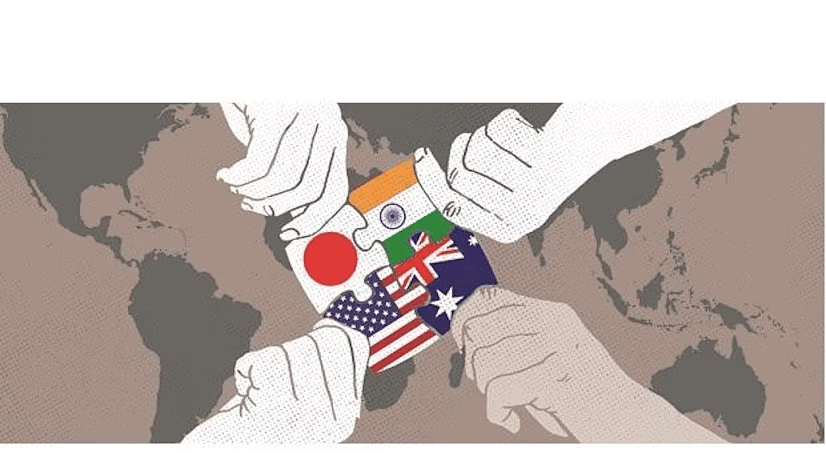Humanities/Arts Exam > Humanities/Arts Notes > Political Science Class 12 > Revision Notes - India’s External Relations
India’s External Relations Revision Notes | Political Science Class 12 - Humanities/Arts PDF Download
Overview
In this Chapter, India's external relations refer to its interactions and engagements with other countries and international organizations. These relations encompass diplomatic, economic, political, cultural, and strategic aspects, reflecting India's foreign policy objectives and priorities. It explores India's relationships with neighboring countries, major powers, regional blocs, and multilateral forums, highlighting key events, challenges, and achievements in India's external affairs.

FACTS THAT MATTER
- Post-independence, India faced dual challenges of welfare and democracy, alongside engaging in global affairs with issues inherited from British colonialism, partition pressures, and poverty alleviation efforts.
- In response to the post-World War II context, India formulated foreign relations strategies focused on respecting sovereignty to ensure security through peace, as outlined in Article 51 of the Indian Constitution, which enshrined the Directive Principles of State Policy.
- Pt. Jawaharlal Nehru, the primary architect of India's foreign policy, aimed to safeguard India's sovereignty, territorial integrity, and foster rapid economic growth. Non-Aligned Movement (NAM) was adopted to steer clear of military alliances.
- Nehru's tenure saw India's active engagement with Asian and African states through conferences on various issues, such as Asian Relations, Indonesia's Freedom Struggle, and participation in the Bandung Conference (1955).
- Panchsheel, comprising five principles of peaceful coexistence, signed between India and China in 1954, aimed at fostering friendly relations. India supported China diplomatically even after its communist revolution.
- Tensions arose between India and China due to China's annexation of Tibet and claims over Indian territories like Aksai Chin and NEFA, leading to unresolved disputes and eventual conflict.
- India and Pakistan engaged in armed conflict over the Kashmir issue in 1965, necessitating UN intervention and culminating in the Tashkent Agreement (1966) to ease tensions, though the war strained India's economy further.
- India's foreign policy aimed at regional power status was evident during the Bangladesh Liberation War (1971), where India supported Bangladesh's independence, leading to the Shimla Agreement (1972) formalizing peace with Pakistan.
- India's Nuclear Policy, guided by Nehru's vision, emphasizes no first use and advocates for global nuclear disarmament through verifiable and non-discriminatory means, rejecting the Nuclear Non-Proliferation Treaty (NPT) as discriminatory and reiterating the peaceful use of nuclear technology.
WORDS THAT MATTER
- Non-alignment: Policy of refraining from joining any military alliances, particularly during the Cold War era, to maintain independence and neutrality in global conflicts.
- Foreign Policy: The strategy and approach adopted by a nation to interact with other countries, considering both domestic priorities and external factors, to safeguard national interests and promote international cooperation.
- Panchsheel: A set of five principles of peaceful coexistence, including mutual respect for sovereignty and territorial integrity, non-aggression, non-interference in internal affairs, equality, and mutual benefit, agreed upon between India and China in 1954.
- Bandung Conference: A gathering of Asian and African nations held in Bandung, Indonesia, in 1955, aimed at promoting Afro-Asian solidarity, decolonization, and establishing the Non-Aligned Movement (NAM) to pursue policies independent of Cold War blocs.
- NEFA: Acronym for North-East Frontier Agency, a region encompassing much of present-day Arunachal Pradesh, India, particularly relevant in the 1960s during border disputes between India and China.
The document India’s External Relations Revision Notes | Political Science Class 12 - Humanities/Arts is a part of the Humanities/Arts Course Political Science Class 12.
All you need of Humanities/Arts at this link: Humanities/Arts
|
34 videos|308 docs|51 tests
|
FAQs on India’s External Relations Revision Notes - Political Science Class 12 - Humanities/Arts
| 1. What are India's major external relations? |  |
Ans. India has major external relations with countries like the United States, China, Russia, and neighboring countries in South Asia. These relations involve diplomatic, economic, and strategic cooperation to promote regional stability and address common challenges.
| 2. How does India engage with the United States? |  |
Ans. India engages with the United States through various mechanisms such as high-level visits, joint military exercises, and economic collaborations. Both countries have a strategic partnership and work together on issues like defense, counterterrorism, trade, and investment.
| 3. What is India's relationship with China? |  |
Ans. India's relationship with China is complex and encompasses both cooperation and competition. The two countries have significant economic ties but also have territorial disputes along their shared border. India seeks to maintain peaceful coexistence while addressing areas of disagreement through dialogue and negotiations.
| 4. How does India collaborate with Russia? |  |
Ans. India and Russia share a longstanding relationship, marked by defense cooperation, energy partnerships, and cultural exchanges. Both countries engage in joint military exercises and have a history of defense equipment purchases. They also collaborate in space exploration and nuclear energy.
| 5. What is the importance of India's relations with neighboring South Asian countries? |  |
Ans. India places high importance on its relations with neighboring South Asian countries due to geographical proximity, historical and cultural ties, and shared security concerns. These relationships are aimed at fostering regional cooperation, enhancing connectivity, and addressing common challenges such as terrorism and climate change.
Related Searches

















